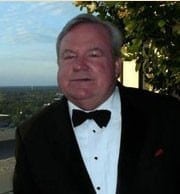Designs on the future
June 25, 2015By Temple Ligon
When architect Frank Lloyd Wright was in the courtroom witness chair, he was asked by a trail lawyer to introduce himself. He answered, “Frank Lloyd Wright, world’s greatest architect.”
The lawyer was a bit taken aback and said, “Mr. Wright, how can you say that?”
“Because I am under oath,” replied Wright.
Beginning in 1979, thanks to the Pritzker Prize, Wright’s answer might have had more credibility if he had, in fact, received the Pritzker Prize that same year he sat in the witness chair. It is the mission of the Pritzker Prize to recognize the world’s greatest living licensed architect.
Wright would have fit in beautifully with the Pritzker Prize laureates, but Wright died in 1959, twenty years before the first award.
The first Pritzker Prize, 1979, went to Philip Johnson who was cited for “50 years of imagination and vitality embodied in a myriad of museums, theaters, libraries, houses, gardens and corporate structures.” Johnson first gained notice as an architectural historian when he co-authored the catalogue for the 1932 exhibition “Modern Architecture” at New York City’s Museum of Modern Art. Johnson and his co-author first coined the term, International Style.
Johnson was the scholar but not the architect, as he was recognized for his scholarship. He didn’t attend architecture school, Harvard, until around the time of WWII, and even then his first serious commission was later on with his own house, called the Glass House, in 1949 in New Canaan CT.
Ten years later his joint-venture design with Mies van der Rohe, the Seagram Building on Park Avenue in New York City, opened for business with the Four Seasons Restaurant, designed exclusively by Johnson, on the ground floor.
Just about everybody in architectural history circles and practitioners in the profession all agreed on the selection of Johnson for the first Pritzker Prize – nothing controversial there.
But controversy followed with the second Pritzker Prize, which went to Mexico’s Luis Barragan. Johnson offered variety, while Barragan stuck to severity.
The third Pritzker Prize recognized the “best architect of his generation,” as critics called James Stirling of the UK. Stirling gained far-flung ground in his commissions, particularly in the United States and in Germany when he wasn’t building in the UK. He and his partner Michael Wilford designed the architecture building at Rice University in Houston, the Tate Gallery addition in London, and a performing arts hall on campus at Cornell, for a few examples. His greatest masterpiece, possibly, is his museum in Stuttgart.
The architect of the Sydney Opera House, Denmark’s Jorn Utzon, won the award in 2003, but the next year’s award is the one I really appreciated. Zaha Hadid, a woman from Iraq, won, and her works in the performing arts were all more admirable than Utzon’s Sydney Opera House. In fact, I would nominate Hadid above all the other living laureates for most any commission she would agree to accept.
Which brings us to the profound point I am attempting here: Let’s get a Pritzker Prize laureate architect to build in Columbia.
Careful: Design fees go up in price whenever a Pritzker Prize winner gets involved, but the construction cost of the building can be held to expectations just as well as with any construction project.
To take the idea one step further, Columbia could invite three Pritzker Prize laureates to compete in an architectural design competition. And leave it with just the design. The construction documents and the construction management could be under the control of one of our fine firms right here in town. The public perception of Columbia would skyrocket. And that heightened profile would continue for the life of the building, like forever.
The three Pritzker Prize winners I recommend are Ms Hadid, Jean Nouvel of France, and Renzo Piano of Italy. A bad building can cost just as much as a truly distinguished work of architecture, so the price of the project has not gone up with these starchitects, just the design fee, probably the smallest piece when considering the whole pie of A&E fees.
I like the idea of approaching architect James Barker, former architecture dean at Clemson and former president at Clemson, to run the design competition. Barker must be well compensated, as should all three of the competitors. If Barker can’t do it, fine, we’ll shop the deal until we come up with what we need.
Where’s the money coming from?
The Bridge.
Sign up here to start your free subscription to MidlandsLife!

















